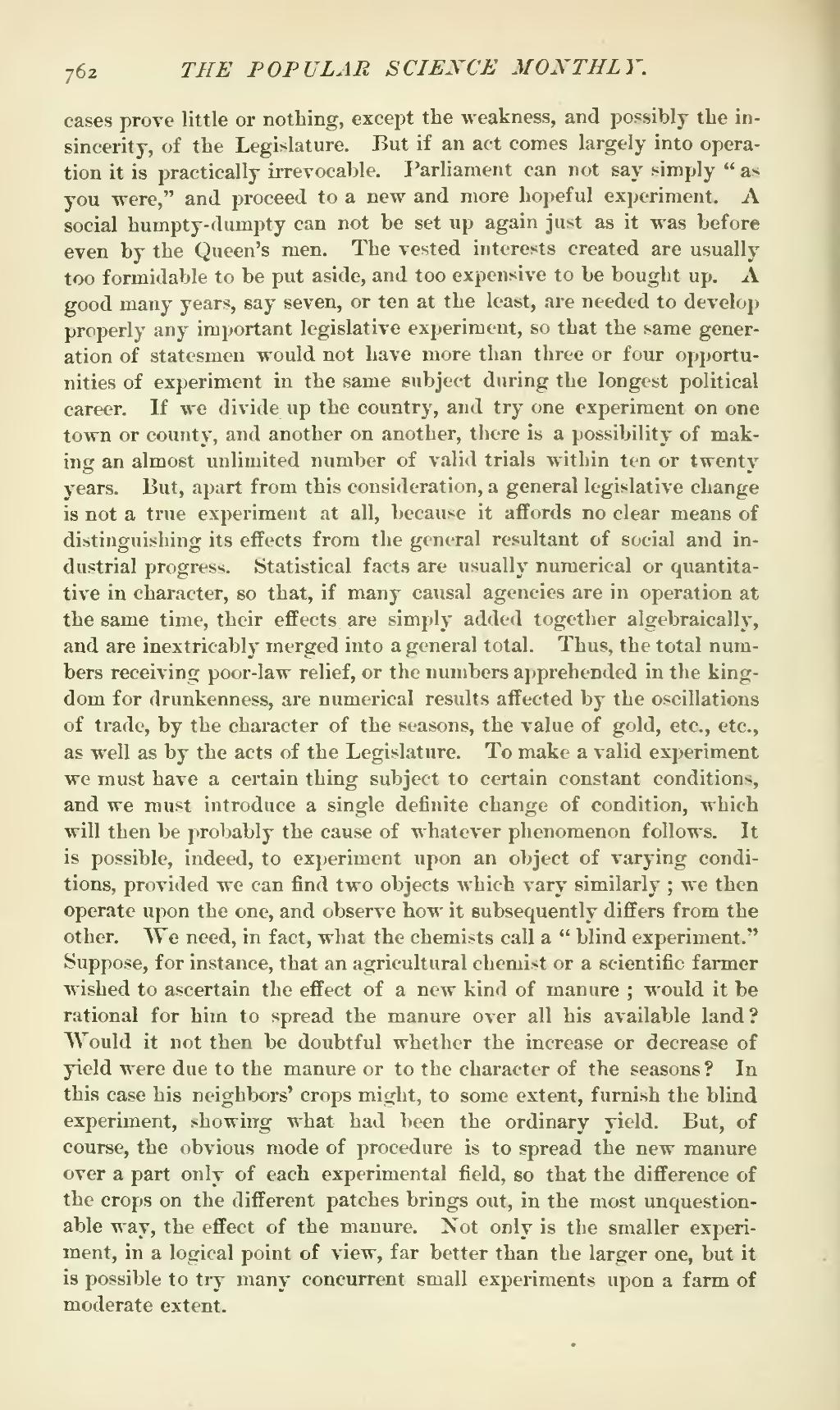cases prove little or nothing, except the weakness, and possibly the insincerity, of the Legislature. But if an act comes largely into operation it is practically irrevocable. Parliament can not say simply "as you-were," and proceed to a new and more hopeful experiment. A social humpty-dumpty can not be set up again just as it was before even by the Queen's men. The vested interests created are usually too formidable to be put aside, and too expensive to be bought up. A good many years, say seven, or ten at the least, are needed to develop properly any important legislative experiment, so that the same generation of statesmen would not have more than three or four opportunities of experiment in the same subject during the longest political career. If we divide up the country, and try one experiment on one town or county, and another on another, there is a possibility of making an almost unlimited number of valid trials within ten or twenty years. But, apart from this consideration, a general legislative change is not a true experiment at all, because it affords no clear means of distinguishing its effects from the general resultant of social and industrial progress. Statistical facts are usually numerical or quantitative in character, so that, if many causal agencies are in operation at the same time, their effects are simply added together algebraically, and are inextricably merged into a general total. Thus, the total numbers receiving poor-law relief, or the numbers apprehended in the kingdom for drunkenness, are numerical results affected by the oscillations of trade, by the character of the seasons, the value of gold, etc., etc., as well as by the acts of the Legislature. To make a valid experiment we must have a certain thing subject to certain constant conditions, and we must introduce a single definite change of condition, which will then be probably the cause of whatever phenomenon follows. It is possible, indeed, to experiment upon an object of varying conditions, provided we can find two objects which vary similarly; we then operate upon the one, and observe how it subsequently differs from the other. We need, in fact, what the chemists call a "blind experiment." Suppose, for instance, that an agricultural chemist or a scientific farmer wished to ascertain the effect of a new kind of manure; would it be rational for him to spread the manure over all his available land? Would it not then be doubtful whether the increase or decrease of yield were due to the manure or to the character of the seasons? In this case his neighbors' crops might, to some extent, furnish the blind experiment, showing what had been the ordinary yield. But, of course, the obvious mode of procedure is to spread the new manure over a part only of each experimental field, so that the difference of the crops on the different patches brings out, in the most unquestionable way, the effect of the manure. Not only is the smaller experiment, in a logical point of view, far better than the larger one, but it is possible to try many concurrent small experiments upon a farm of moderate extent.
